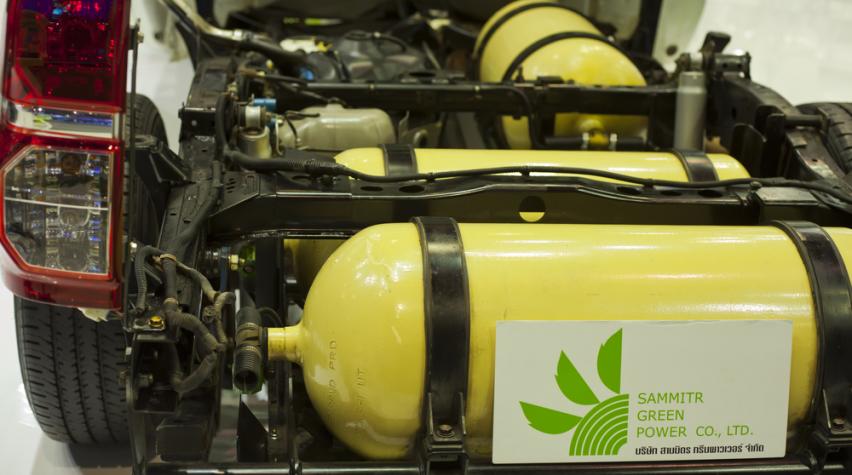
Traveling home from AIChE Annual in Salt Lake City this year, I faced one of the challenges of compressed natural gas (CNG) vehicles firsthand. Waiting at the hotel for a Lyft driver to arrive and take me to the airport, I saw a small white car bound around the corner and pull up to the front door. On the back was the familiar CNG sticker, a pleasant surprise. But when the trunk popped open, I got a second surprise: very little storage space, thanks to the tank holding the CNG. But with any luck, this situation is soon to change, according to a recent report in MIT’s Technology Review.
Two drawbacks of natural gas tackled
Jeffery Long, professor of chemistry and chemical and bimolecular engineering at the University of California, Berkeley, and colleagues have devised a space-efficient natural gas tank that can store the same amount of gas as bulky conventional tanks at a much lower pressure.
Two great drawbacks of CNG are the need for expensive compression and the required bulky fuel tanks (like the one I recently encountered). Long’s solution turns to the alternative form of CNG known as adsorbed natural gas (ANG), which takes advantage of a tank lined with a porous material with a large surface area.
Long’s group is aiming to sidestep the 250 atmospheres of pressure required and has its sights set on a system that only requires 35-65 atm. Storage at 35 atm means conventional cooking gas could fuel vehicles.
Flexible tank is the solution
The UC Berkeley researchers were faced with the challenge of maintaining enough pressure so that the engine could run (a minimum pressure of 5-6 atm is required), but early tank designs lost too much pressure before completely emptying. The solution was to turn to a flexible tank, which begins to collapse as it empties, thus pushing out any remaining gas into the engine at a workable pressure.
See more details in the recently published work of Long and his colleagues. To learn more about the Long Group and its research, see the group’s site.



Comments
Is the natural gas actually adsorbed on the surface inside the porous material? If yes, how much will be the final pressure where the gas will desorb from the pores surface? How easy the porous material will release back the natural gas? No need for heating?
Hi Victor, thanks for the questions. I don't know the answers to these specific questions, but you might check out this press release from Berkeley (http://newscenter.lbl.gov/2015/10/27/on-the-road-to-ang-vehicles/), and surely the group's published work in the journal Nature will have a considerable amount of detail (http://www.nature.com/nature/journal/v527/n7578/full/nature15732.html). If all else fails, you could try contacting the Long Group lab directly (http://alchemy.cchem.berkeley.edu/home/). They may be receptive to discussing their work with you. Good luck!
Thank you, Douglas.